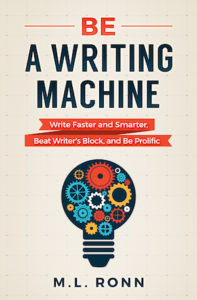OK, here are some details on what I’m working on related to AI editing. If I fail, it’ll be a few day’s worth of work lost and not that big of a deal, and I will have learned a metric ton of knowledge about GPT-3. If I succeed, we all win!!!!!
For the last two days, I’ve been talking about ChatGPT and how I discovered that it is actually a pretty good proofreader despite most people using it for text generation.
Subscriber Tom made a comment on last night’s blog that was really helpful for me: ChatGPT is OpenAI’s chat tool. GPT-3 is its language model. I knew that, but I was being imprecise so I wanted to set that straight.
Tom mentioned something that got me thinking. ChatGPT is fairly limited but the editing power I am looking for actually resides within GPT-3. If I could find out how to use that, then I can circumvent the limitations I mentioned the night before last. Thanks Tom for the suggestion!
Turns out, this can be done, but it’s uncharted territory, so I have a few angles that I’m exploring to see which one is possible. Both might be.
ANGLE #1 is enabling GPT-3’s editing capabilities inside Google Docs. Someone uploaded a YouTube video explaining exactly how to integrate GPT-3 into Google Docs. It takes less than 10 minutes and it’s easy enough that even non-technical people can do it. The tool uses Google’s Apps Scripts feature within Google Docs. (Look for a video called GPT-3 + Google Docs).
While you are tied to Google Docs, it’s better than using ChatGPT.
If you follow the tips in the video, you can have this installed in less than 10 minutes. The only thing you need is an API key from OpenAI and a paid plan (though they offer a free trial with an $18 credit). You just have to change the prompt to something like “edit this text for typos only.”
The pricing for OpenAPI is incredibly cheap. You only pay for what you use. Running 50,000 words through the API would only cost you around $1, and that’s with the most expensive plan. So cost is not an issue.
Anyway, the script I found basically runs like a macro that tells GPT-3 to edit the selected text for typos. The downside is that this particular script doesn’t quite work too well for editing because it was designed for text creation. It also inserts the edited text directly below the original text, which isn’t helpful because you don’t know what changed.
I’m working with someone to see if we can tweak the script to play more nicely with Google Docs and make it so that it inserts GPT-3’s suggestions as tracked changes in the Google Doc. You’d be able to edit approximately 1500 words at a time (which is OpenAI’s limit). If we can get this far, then we’ll explore whether there is a way to get the script to run on an entire document.
Will it work? Not sure. I’ll find out next week. If it does, I’ll share it for free and probably do a video to help folks with installing it. I promise it will be easy. If you can follow a screen share, then you’ll be able to do it.
ANGLE #2 is a bit more sophisticated but I think much better. The idea is to use Word and Python. Basically, you’d be able to upload a Word doc to an application that would interface with GPT-3 and then create a new document with GPT-3’s edits. It would then create a comparison between the original and new document as tracked changes that you could review in Word (or upload to Google Docs).
This path is a little more difficult. It’s also more technical and won’t be easy for most folks to install. I’ll find out next week if it can be done.
If anyone has additional ideas, feel free to shoot them my way. I think we can all agree that integrating GPT-3’s editing functionality into existing writing apps is the way to go, but it’s hard to know if someone will tackle this and/or how easy it will be for developers. It would also be great if there was an add-in to MS Word that did this.
In the meantime, I plan on using GPT-3’s proofreading capabilities to help me cut my typos and grammar errors by about 50%. And my manuscripts are already quite clean.
All this will cost me is a few days’ worth of work, an initial upfront, one-time investment for programming (which is quite reasonable), and $25/year for use of the OpenAI API (that’s the cost to review 1 million words). And, when OpenAI releases GPT-4 later this year, I’ll automatically get the benefit of new advancements in the model as well. Oh, and I dramatically reduce the errors in my work by at least 50%. It’s a slam dunk if you ask me.
Anyway, that’s what I’m working on. Now it’s time to get some writing done. Have a good night.

